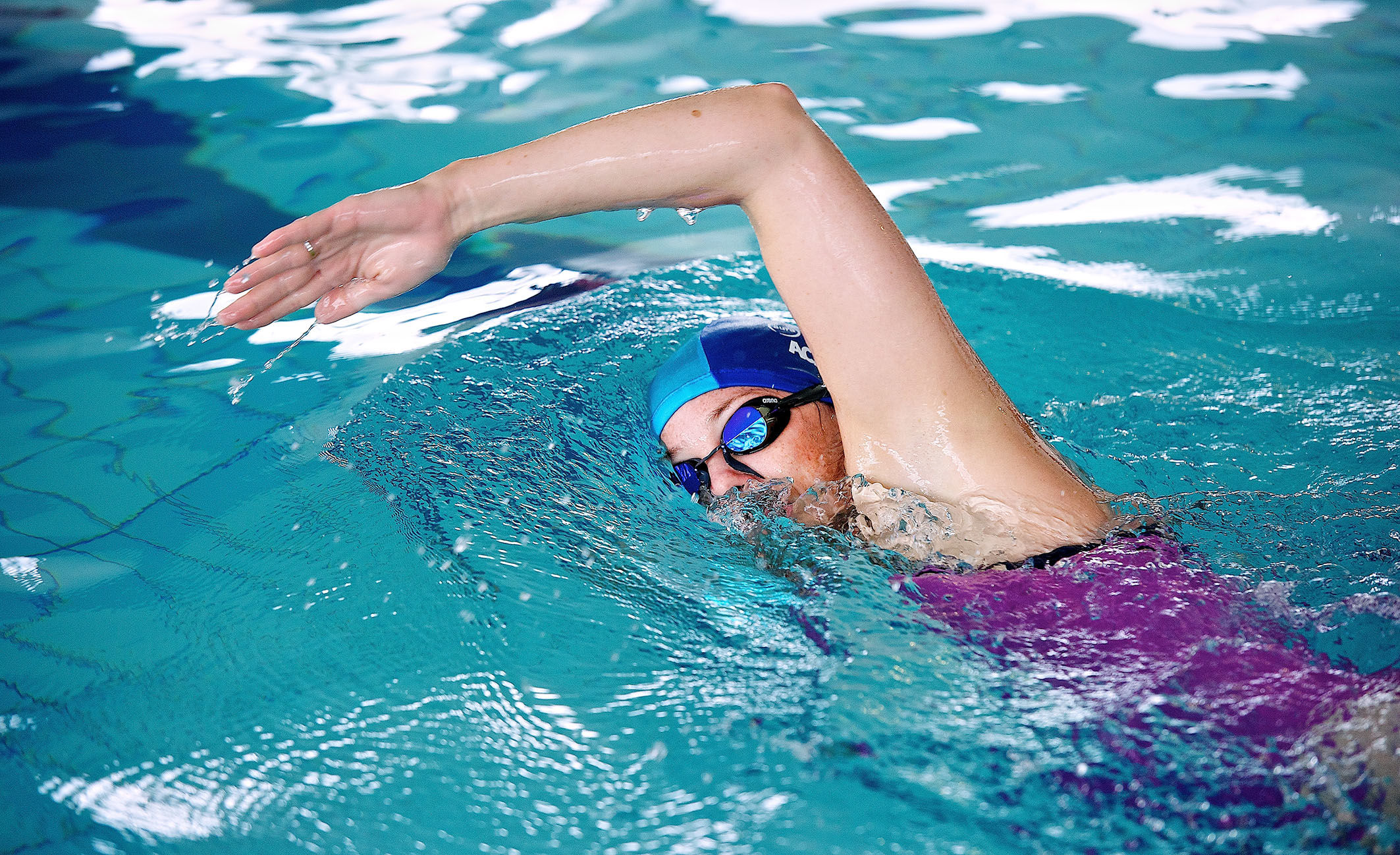Our Swim Coordiator and experienced Swim Teacher Gavin Doran takes a look at how we can improve our Front Crawl technique with a little bit of research..
Frontcrawl can be a complex and confusing stroke but when done correctly it appears effortless. The real challenge of the stroke doesn’t actually lie with any particular physical movement or skill, it comes from the intricate coordination of all these movements into a structured and efficient pattern.

How you think about the stroke has a massive impact on how you perform it. An example of this is a swimmer who has repeatedly had the reinforcement of a message such as “kick harder” drilled into them over many years and countless lengths. This has become the foundational basis of their stroke. They are naturally going to rely heavily on their legs while swimming and this intense focus reverberates around the whole stroke and impacts every area imaginable.
So the question for us becomes “How should we look to build the foundation for our stroke?” and for the answers to this question the best place to turn is always the data that the top researchers in the field have compiled.
Arms vs Legs?
You would probably imagine that a good stroke is relatively balanced between the arms and the legs right? Well the data here is actually really interesting and shows that on average the legs only account for 8-10% of the propulsion of top swimmers. 8-10%!! That’s a seismic shift in terms of the conventional wisdom of Frontcrawl.
I was floored when I first read that and saw those astronomical numbers for arm-lead propulsion. I wanted to search deeper and see was there any other data points that either supported or contradicted this statistic which I was sure was on outlier. Along that journey I found two more statistics that can help revolutionise the way we envisage Frontcrawl, we are going to look at them in a bit more detail.

Propulsion & Balance
The first of these was the relative inversely proportional relationship between propulsion and balance. This showed that while the legs didn’t do much in the way of propulsion they and the torso contributed up to 90% of the swimmers balance. This becomes critical to how we view the role of the legs in swimming.
Oxygen Consumption
The second was the relative oxygen consumption rates between the arms and legs at equal thresholds, which essentially means how much oxygen they both burn when working at the same rate. The legs were found to burn upwards of 4x as much oxygen as the arms! Not only do they not give us much propulsion when we kick them harder but they burn up our most vital resource at an exponential rate.
Ok, so now that we are armed with some game changing data points, how can we put these into practice? The most important step is to recognise what the data is showing us in its simplest terms. That is that the arms are primarily responsible for propulsion and the torso and legs are primarily responsible for balance in the water.
This fundamentally changes how we view the construction of the stroke. We need to focus on the effectiveness and efficiency of our underwater arm pull as the technical area of chief importance. Combining this with supremely effective rotation based from the hips and we have a winning formula.

Breathing Deep
The area most people tend to struggle with is the breathing and for good reason, it’s a tough skill to master! However now as we look at it through a new lens we can achieve our goals by utilising an alternative strategy. The goal when breathing is to disrupt the stroke minimally, that’s why people struggle with it so much. They tend to have a smooth stroke when their face is in the water and then everything stops to get their heads up.
If you work on body rotation from the hips in each stroke what you will find is that you are naturally putting yourself in a position to breathe. When the hips and shoulders rotate to lengthen out your stroke all you have to do is let your head stay in line with the shoulders and you should find it breaking the surface of the water and allowing you to take in that vital oxygen.
The Bottom Line:
This is a lot of information to take on but the bottom line is clear. Focus on your arms to move you in the water, not your legs. Work on your rotation in the water to breathe, not lifting. Rotation will also allow you to pull stronger and faster, length out your stroke and help with overall stroke balance.
Swimming is hard. Make it as easy as possible for yourself to maximise your results and reap the benefits of swimming.
Gavin Doran, Aura Drogheda
